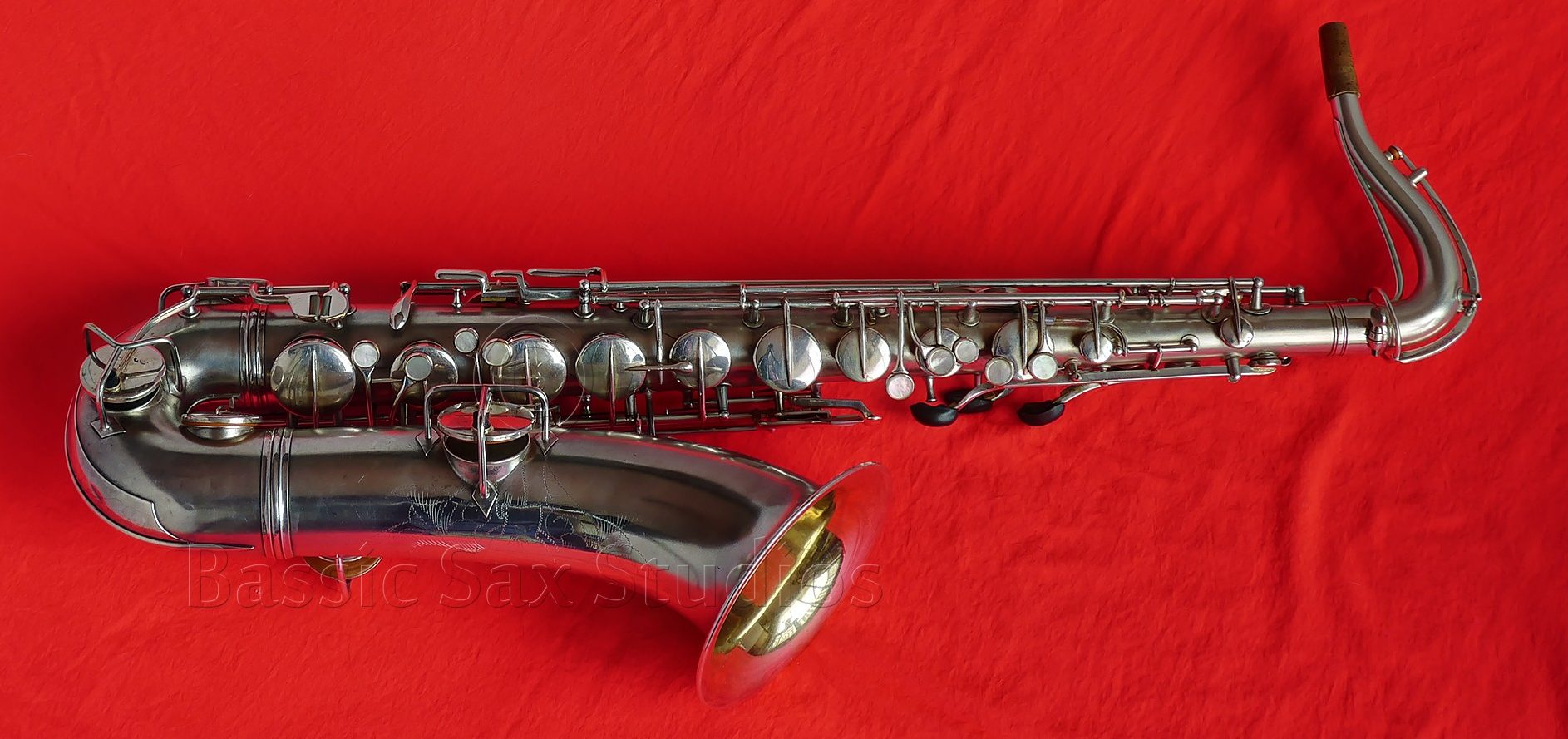Source: eppelsheim.com used with permission
The Tubax is the saxophone that got Benedikt Eppelsheim recognized as an innovator in the field of woodwind instrument design. When the first Eb Tubax was premiered to the public in 1998, it turned the saxophone world on its ear. Suddenly there was a new type of saxophone out there: a saxophone that didn’t quite look like the rest. It looked a bit more like the sarrusophones of days gone by, than the tried and true saxophones that good old Adolphe designed. Or did it?

If one is to carefully look at Adolphe Sax’s original patent drawing, one would notice an instrument referred to as the Saxophone Bourdon (first on left). It is from this instrument, combined with Gautrot’s sarrusophone, that Benedikt Eppelsheim drew his inspiration when he designed his Tubax.¹
Benedikt Eppelsheim designed his Tubax as an alternate to the conventional Eb contrabass saxophone, in an effort to overcome some of the problems inherent in the original, and then-current production model contras. The original contras (the Evette Schaeffer horns), were, for manufacturing purposes, more or less cobbled together out of bass and baritone parts. For that reason, the tone holes were too small, because they utilized bass saxophone keys. According to Eppelsheim, the late 1990 era production model contras—made by Orsi—although specifically designed as such, had less than ideal bore dimensions. The resulting problems include an uneven scale, and difficulties with intonation.
Conventional contras are enormous beasts, that are ergonomically not very friendly. This automatically limits the number of potential players who might be able play the horn, as only bigger people with more lung capacity and larger hands can properly operate the contrabass saxophone. This reality gave Benedikt Eppelsheim the idea to look back at Adolphe Sax’s concept of the Saxophone Bourdon, and to Gautrot’s sarrusophone, and combine them together to come up with a new, modern alternative to the conventional contra.
The Tubax’s narrow body tube, which unlike conventional saxophones, is wrapped 4 times, required Eppelsheim to completely recalculate the instrument’s proportions and tone hole locations. The result is quite remarkable. The Tubax, without its peg and neck, is only 114 cm—44.9 inches—tall. Compare this to a baritone, which is is approximately 100 cm, or 39.4 inches in height. Those extra 5½ inches in height, will get you an instrument that plays exactly 1 octave lower.
Horn Specs:
- Pitched in key of Eb
- 1 octave lower than the baritone saxophone
- Conical bore design
- 3 automatic octave keys
- Height: 114 cm/44.9 in
- Weight: 10 kg/22 lbs
- Range: Bb to F#, but with the additional altissimo register key, the range is extended to D4
- Finish Options: Lacquer, Silver plate, Gold plate
- Mouthpiece: Uses standard baritone sax mouthpieces
Source: eppelsheim.com Used with permission
_________________________________________________________________________









You must be logged in to post a comment.